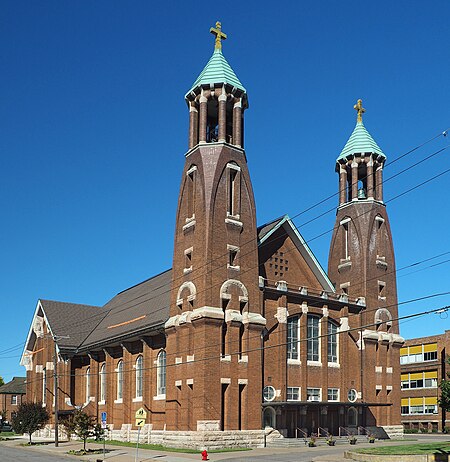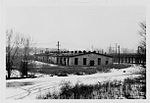Church of St. Bernard (Saint Paul, Minnesota)
20th-century Roman Catholic church buildings in the United StatesArt Nouveau architecture in MinnesotaArt Nouveau church buildings in the United StatesChurches on the National Register of Historic Places in MinnesotaMinnesota Registered Historic Place stubs ... and 6 more
Minnesota church stubsNational Register of Historic Places in Saint Paul, MinnesotaPrairie School architecture in MinnesotaRoman Catholic churches completed in 1914Roman Catholic churches in Saint Paul, MinnesotaSaint Paul, Minnesota stubs

The Church of Saint Bernard is a Roman Catholic parish in the North End neighborhood of Saint Paul, Minnesota. The brick church was designed by John Jager and built 1905–1914 in the Prairie School and Art Nouveau styles. It is listed on the National Register of Historic Places.The parish formerly included a private school, Saint Bernard's High School, which closed in 2010 due to declining enrollment.
Excerpt from the Wikipedia article Church of St. Bernard (Saint Paul, Minnesota) (License: CC BY-SA 3.0, Authors, Images).Church of St. Bernard (Saint Paul, Minnesota)
West Geranium Avenue, Saint Paul North End
Geographical coordinates (GPS) Address External links Nearby Places Show on map
Geographical coordinates (GPS)
| Latitude | Longitude |
|---|---|
| N 44.976111111111 ° | E -93.1075 ° |
Address
Saint Bernards
West Geranium Avenue
55117 Saint Paul, North End
Minnesota, United States
Open on Google Maps








